Showing Spotlights 9 - 16 of 161 in category All (newest first):
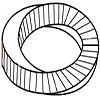 By harnessing the unique properties of Moebius rings, scientists have discovered a way to precisely control light in complex curved spaces, paving the way for innovative optical technologies.
By harnessing the unique properties of Moebius rings, scientists have discovered a way to precisely control light in complex curved spaces, paving the way for innovative optical technologies.
Mar 21st, 2024
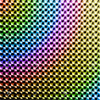 Researchers have created the first single-layer liquid crystal display that can project dynamic full-color holographic images, a breakthrough for holography.
Researchers have created the first single-layer liquid crystal display that can project dynamic full-color holographic images, a breakthrough for holography.
Mar 11th, 2024
 Researchers have developed transparent wood with tunable, long-lived room-temperature phosphorescence, enabling applications like smart windows and lighting.
Researchers have developed transparent wood with tunable, long-lived room-temperature phosphorescence, enabling applications like smart windows and lighting.
Mar 7th, 2024
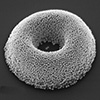 Advanced nanoengineering technique crafts intricate 3D plasmonic structures, offering new possibilities in light manipulation at the nanoscale, with wide-ranging applications in technology and biomedicine.
Advanced nanoengineering technique crafts intricate 3D plasmonic structures, offering new possibilities in light manipulation at the nanoscale, with wide-ranging applications in technology and biomedicine.
Jan 10th, 2024
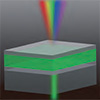 Recent advances establish stimuli-responsive hydrogels as an optimal platform for long-sought reconfigurable photonic systems with tunable optical properties and dynamic control over light's behavior.
Recent advances establish stimuli-responsive hydrogels as an optimal platform for long-sought reconfigurable photonic systems with tunable optical properties and dynamic control over light's behavior.
Jan 9th, 2024
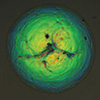 Researchers develop concept to inkjet print tunable self-assembling cellulose nanocrystal photonic film arrays at scales compatible with industrial label printing, unlocking applications from anticounterfeiting to sustainability.
Researchers develop concept to inkjet print tunable self-assembling cellulose nanocrystal photonic film arrays at scales compatible with industrial label printing, unlocking applications from anticounterfeiting to sustainability.
Dec 11th, 2023
 Researchers demonstrate focused electron beam induced deposition can reliably 3D print gold nanostructures with fully predictable, spectrally tunable plasmonic responses. The technique's flexibility enables precise vertical and lateral mode engineering in intricate geometries, unlocking applications from augmented spectroscopy to quantum optics.
Researchers demonstrate focused electron beam induced deposition can reliably 3D print gold nanostructures with fully predictable, spectrally tunable plasmonic responses. The technique's flexibility enables precise vertical and lateral mode engineering in intricate geometries, unlocking applications from augmented spectroscopy to quantum optics.
Nov 22nd, 2023
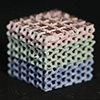 DLP 3D printing of photonic colloidal glasses creates intricately shaped materials with tunable structural color properties. Combining rational design and digital manufacturing opens new possibilities.
DLP 3D printing of photonic colloidal glasses creates intricately shaped materials with tunable structural color properties. Combining rational design and digital manufacturing opens new possibilities.
Oct 28th, 2023
 By harnessing the unique properties of Moebius rings, scientists have discovered a way to precisely control light in complex curved spaces, paving the way for innovative optical technologies.
By harnessing the unique properties of Moebius rings, scientists have discovered a way to precisely control light in complex curved spaces, paving the way for innovative optical technologies.
 Subscribe to our Nanotechnology Spotlight feed
Subscribe to our Nanotechnology Spotlight feed





